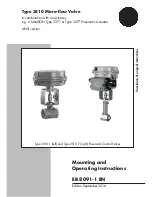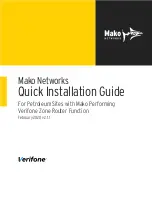
Last
: Loop polling starting.
8.
Review the faults (using the FAULT QUEUE REVIEW key if there is more than one). Note down the messages, then
remove power and rectify the faults
9.
Power up the system, let it initialize and enter programming mode
10. Select function 7-1 Device Count, Type and Value
11. Use 1
▲
or 3
▼
to select the device, confirm that all devices are present. If the fitted Loop Card has more than 1 loop,
use the 2
►
to scroll through loops and verify the presence and proper operation of all devices fitted to this loop
12. Once all faults have been cleared and the system has been in Installation Mode for 120 seconds, then the system can
be put into ACTIVE MODE.
NOTE:
There is no clear end on the devices recognition Installation mode, because the system is constantly looking and
learning. However if the system is put into Active Mode and Installation Mode hasn’t had time to identify all system
components, you will very quickly be greeted with error reports regarding unexpected devices.
If devices are ever removed, replaced or added then Installation Mode must be selected so that the system can learn a
new configuration. If you do not do this, the system will report a fault or missing devices.
New Self Addressable Devices need a different installation process because they need to be assigned addresses before
the panel can learn that they are present. This procedure is covered later in this manual in the section entitled “6-4
Automatic Address Setting”.
Sounder Audibility Check
If the building is unoccupied then press SOUND ALARMS. All sounders should operate until the button is pressed again.
Confirm that this is the case.
If the building is occupied it is strongly recommended that the test sounders functions in programming mode are used.
Enter programming mode and select 7-2 Test Sounders. Using this function, all the sounders can be checked.
The Panel’s Conventional and Loop Sounders will sound for 1 second and then be silenced for 9 seconds.
Analogue Loop Monitoring
Check if a short circuit or open circuit is detected
on any of the Analogue Loops.
Open Circuit Test
Disconnect either the + or the - OUT from the Loop terminal.
The connection is found on the Panel's Main board.
Within a few seconds, a circuit fault should be reported.
No individual detector faults should be reported.
Reconnect the wires and press SYSTEM RESET to clear
the fault reports.
Conventional Sounder Monitoring
Panels have two Conventional Sounder circuits.
Check the Conventional Sounder circuits for open and short circuit fault detection.
To perform the Open-Circuit test, disconnect either the + or - connection at each conventional sounder circuit.
To perform the Short-Circuit test, connect for each sounder circuit a wire link, connecting both the + and -
terminals together.
With either test, after a few seconds, a fault message will appear on the LCD display of both the panel and
repeater(s) indicating that the conventional sounder circuit is in fault.
Both the FAULT and ALARM FAULT Led indicators will be lit.
Restore the original connections and press SYSTEM RESET to clear all the error reports.
WARNING:
If the Conventional Sounder outputs are short circuited while the sounders are active, the electronic
overload protection is tripped and the system will report a sounder fault turning ON the ALARM FAULT LED
simultaneously. Once the short circuit is cleared, a system reset will clear the faults.
NODE+ / Installation & Commission Manual / © GFE 220331
24
Содержание NODE+
Страница 45: ...EN54 13 SPECIFICATIONS Devices with EN54 13 approval NODE Installation Commission Manual GFE 220331 45 ...
Страница 48: ...EN54 and CE SPECIFICATIONS NODE Installation Commission Manual GFE 220331 48 ...
Страница 49: ...DECLARATION OF CE CONFORMITY NODE Installation Commission Manual GFE 220331 49 ...
















































